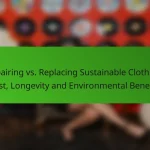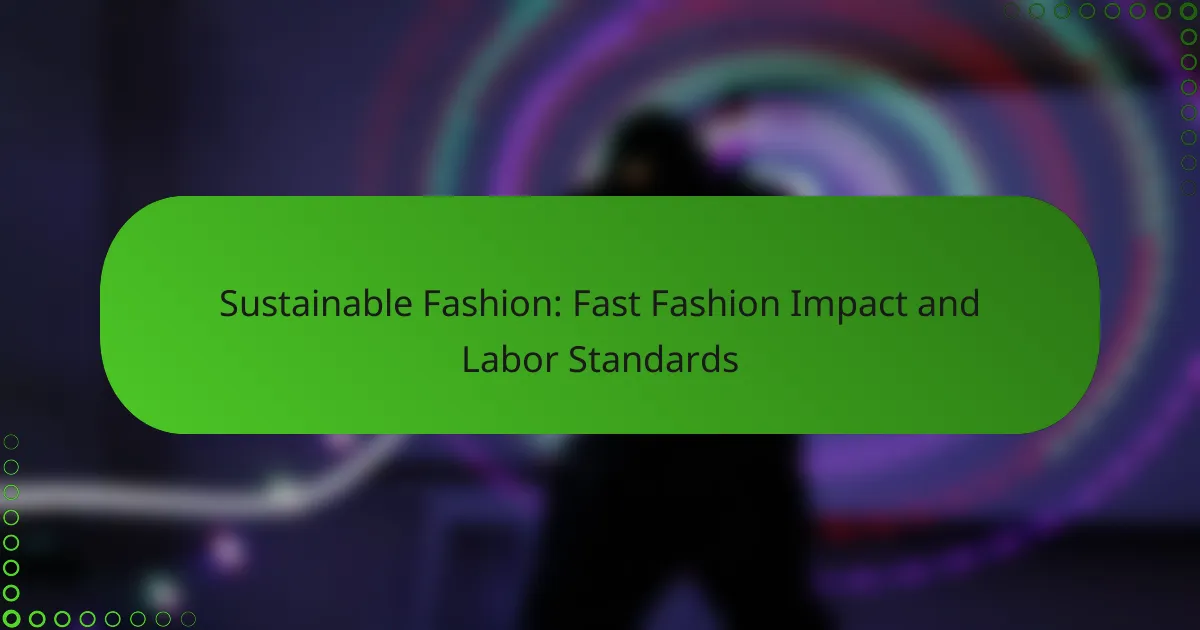Sustainable fashion is not just a trend; it is a commitment to ethical practices that prioritize the rights and welfare of garment workers. By focusing on fair labor practices, brands can ensure safe working conditions and fair wages, while also promoting environmental responsibility. Leading brands like Patagonia, Everlane, and Reformation exemplify this movement by embracing transparency and accountability in their operations, fostering trust with consumers and encouraging positive industry changes.

How can sustainable fashion promote fair labor practices?
Sustainable fashion can promote fair labor practices by ensuring that workers are treated ethically throughout the production process. This involves prioritizing the rights and welfare of garment workers, from sourcing materials to ensuring fair wages and safe working conditions.
Ethical sourcing of materials
Ethical sourcing of materials means selecting fabrics and components that are produced without exploiting workers or harming the environment. Brands can achieve this by choosing organic or recycled materials and working with suppliers who adhere to fair labor standards.
For example, using organic cotton helps reduce pesticide exposure for farmers, while recycled polyester minimizes waste. Brands that prioritize ethical sourcing often publish their material sources to enhance transparency.
Worker rights and protections
Ensuring worker rights and protections is crucial in sustainable fashion. This includes providing safe working conditions, reasonable working hours, and the right to unionize. Brands should actively monitor their factories to ensure compliance with labor laws and ethical standards.
Workers should have access to grievance mechanisms to report violations without fear of retaliation. Implementing regular audits can help brands identify and rectify issues in their supply chains.
Living wages for garment workers
Paying living wages is a fundamental aspect of fair labor practices in sustainable fashion. A living wage is typically defined as the minimum income necessary for a worker to meet their basic needs, including food, housing, and healthcare.
Brands can support this by conducting wage assessments and adjusting their pricing models to ensure that workers receive fair compensation. For instance, some companies have adopted a transparent pricing strategy that reflects the true cost of ethical production.
Transparency in supply chains
Transparency in supply chains involves openly sharing information about where and how products are made. This allows consumers to make informed choices and hold brands accountable for their labor practices.
Brands can enhance transparency by publishing their supply chain maps and engaging in third-party audits. This not only builds consumer trust but also encourages other companies to adopt similar practices.
Certification programs like Fair Trade
Certification programs such as Fair Trade play a vital role in promoting fair labor practices in the fashion industry. These programs set standards for ethical production, ensuring that workers receive fair wages and work in safe conditions.
Brands that participate in these programs can use certification labels to communicate their commitment to ethical practices. This not only attracts socially conscious consumers but also fosters a more equitable market for garment workers globally.
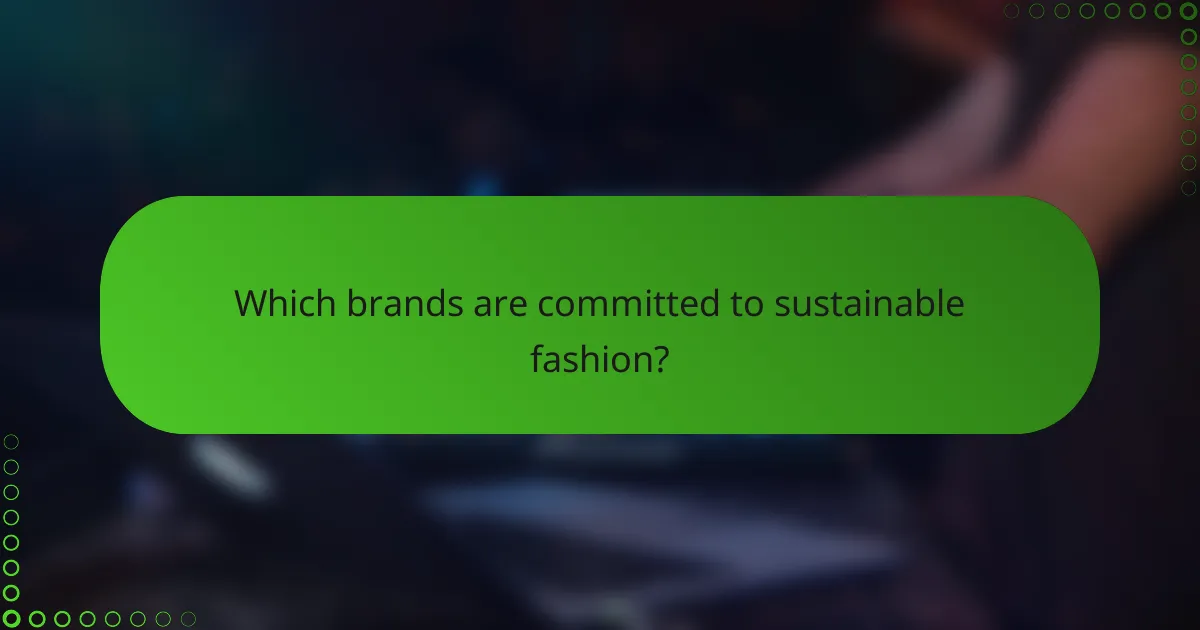
Which brands are committed to sustainable fashion?
Several brands are leading the way in sustainable fashion by prioritizing fair labor practices, environmental responsibility, and transparency. Notable examples include Patagonia, Everlane, and Reformation, each implementing unique strategies to promote sustainability in their operations.
Patagonia’s environmental initiatives
Patagonia is renowned for its strong commitment to environmental sustainability. The brand actively supports various conservation efforts and uses recycled materials in its products, aiming to minimize waste and reduce its carbon footprint.
Additionally, Patagonia encourages customers to repair and recycle their clothing through initiatives like the Worn Wear program, which promotes the idea of reusing and extending the life of garments. This approach not only reduces consumption but also fosters a culture of sustainability among consumers.
Everlane’s transparent pricing model
Everlane is distinguished by its transparent pricing model, which openly shares the costs associated with producing each item. This includes details on materials, labor, and transportation, allowing customers to understand the true value of their purchases.
The brand emphasizes ethical manufacturing by partnering with factories that adhere to fair labor practices. Everlane’s commitment to transparency helps build trust with consumers who are increasingly concerned about the origins of their clothing.
Reformation’s eco-friendly practices
Reformation focuses on eco-friendly practices by utilizing sustainable materials and implementing energy-efficient processes in its production. The brand tracks its environmental impact and shares this data with consumers, promoting accountability and awareness.
Reformation also prioritizes ethical labor practices, ensuring that workers are treated fairly and paid livable wages. By combining style with sustainability, Reformation appeals to a growing demographic of environmentally conscious shoppers.

What are the benefits of transparency in fashion brands?
Transparency in fashion brands fosters trust, accountability, and encourages positive changes within the industry. By openly sharing information about their practices, brands can build stronger relationships with consumers and promote ethical standards.
Increased consumer trust
When fashion brands are transparent about their sourcing and production processes, it enhances consumer trust. Shoppers are more likely to support brands that openly communicate their values and practices, leading to increased loyalty and repeat purchases.
For example, brands that provide detailed information about their supply chains and labor conditions often see a boost in sales, as consumers prefer to invest in companies that align with their ethical beliefs.
Accountability in labor practices
Transparency holds fashion brands accountable for their labor practices. By disclosing information about working conditions and wages, brands are pressured to adhere to fair labor standards and improve their practices.
Brands that commit to transparency can better monitor their supply chains, ensuring compliance with regulations and ethical guidelines. This accountability can lead to improved conditions for workers, such as fair wages and safe working environments.
Encouraging industry-wide change
Transparency can drive industry-wide change by setting benchmarks for ethical practices. When leading brands adopt transparent policies, it encourages others to follow suit, creating a ripple effect throughout the fashion industry.
This collective movement can lead to the establishment of new standards and regulations, promoting sustainability and ethical labor practices across the board. As more brands commit to transparency, consumers can expect a broader shift towards responsible fashion.
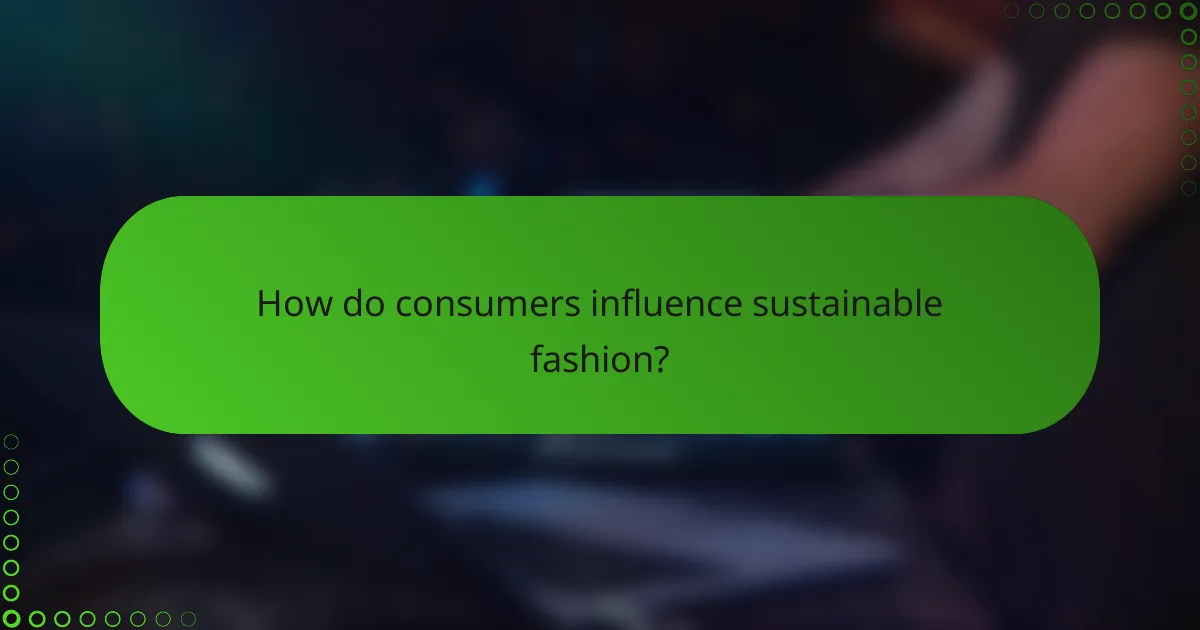
How do consumers influence sustainable fashion?
Consumers play a crucial role in shaping sustainable fashion by demanding ethical practices, supporting transparent brands, and participating in awareness initiatives. Their choices can drive companies to adopt fair labor practices and prioritize sustainability in their operations.
Demand for ethical products
The demand for ethical products has surged as consumers become more aware of the social and environmental impacts of their purchases. Shoppers increasingly seek brands that prioritize fair labor practices, sustainable materials, and eco-friendly production methods.
To effectively influence the market, consumers can research brands and choose those that align with their values. This might include checking for certifications like Fair Trade or Global Organic Textile Standard (GOTS), which indicate adherence to ethical standards.
Support for sustainable brands
Supporting sustainable brands is essential for fostering a more responsible fashion industry. By purchasing from companies that demonstrate a commitment to ethical practices, consumers can help these brands thrive and encourage others to follow suit.
Consumers can identify sustainable brands through various means, such as online reviews, social media, and sustainability ratings. Engaging with these brands on social media platforms can amplify their reach and promote their values to a broader audience.
Participation in awareness campaigns
Participation in awareness campaigns is another way consumers can influence sustainable fashion. By joining or supporting initiatives that promote ethical practices, individuals can raise awareness about the importance of sustainability in the fashion industry.
Consumers can get involved by sharing information on social media, attending events, or signing petitions that advocate for better labor practices and environmental responsibility. Collaborating with organizations focused on sustainable fashion can also enhance their impact.

What frameworks exist for evaluating brand sustainability?
Several frameworks help assess brand sustainability, focusing on environmental impact, social responsibility, and transparency. These frameworks provide guidelines and metrics for brands to measure their sustainability efforts effectively.
Global Reporting Initiative (GRI)
The Global Reporting Initiative (GRI) offers a comprehensive framework for sustainability reporting, emphasizing transparency and accountability. Brands can utilize GRI standards to disclose their economic, environmental, and social impacts, allowing stakeholders to evaluate their sustainability performance.
When using GRI, brands should focus on materiality, ensuring that the reported information reflects the most significant impacts on their stakeholders. This approach helps in prioritizing sustainability initiatives and aligning them with stakeholder expectations.
Sustainable Apparel Coalition (Higg Index)
The Sustainable Apparel Coalition (SAC) created the Higg Index to measure the sustainability of apparel and footwear products. This tool evaluates environmental and social performance across the supply chain, helping brands identify areas for improvement.
Brands using the Higg Index should consider its three main modules: the Higg Facility Environmental Module (Higg FEM), the Higg Brand and Retail Module (Higg BRM), and the Higg Product Module (Higg PM). Each module provides insights into specific aspects of sustainability, enabling brands to make informed decisions and enhance their overall sustainability practices.
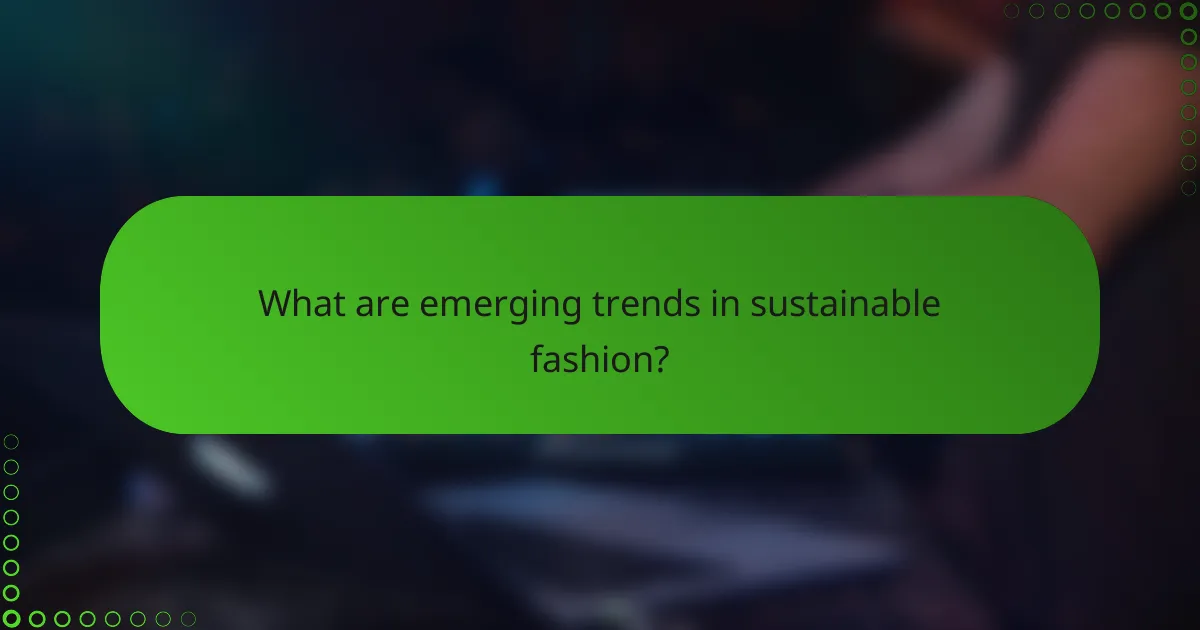
What are emerging trends in sustainable fashion?
Emerging trends in sustainable fashion focus on minimizing environmental impact while promoting ethical practices. Key areas include the use of biodegradable materials and the adoption of circular economy principles, which aim to reduce waste and enhance resource efficiency.
Use of biodegradable materials
The use of biodegradable materials in sustainable fashion involves selecting fabrics that can naturally decompose, reducing landfill waste. Common biodegradable options include organic cotton, hemp, and Tencel, which break down more easily than synthetic fibers.
Brands are increasingly sourcing these materials to align with eco-conscious consumer preferences. When shopping, look for labels that specify biodegradable content to ensure your purchases contribute to a more sustainable future.
Adoption of circular economy principles
Circular economy principles in fashion emphasize reusing and recycling materials to extend the lifecycle of products. This approach encourages brands to design clothing that can be repaired, refurbished, or recycled, minimizing waste and resource consumption.
Consumers can support this trend by choosing brands that offer take-back programs or repair services. Additionally, consider buying second-hand clothing or participating in clothing swaps to promote a circular fashion ecosystem.





